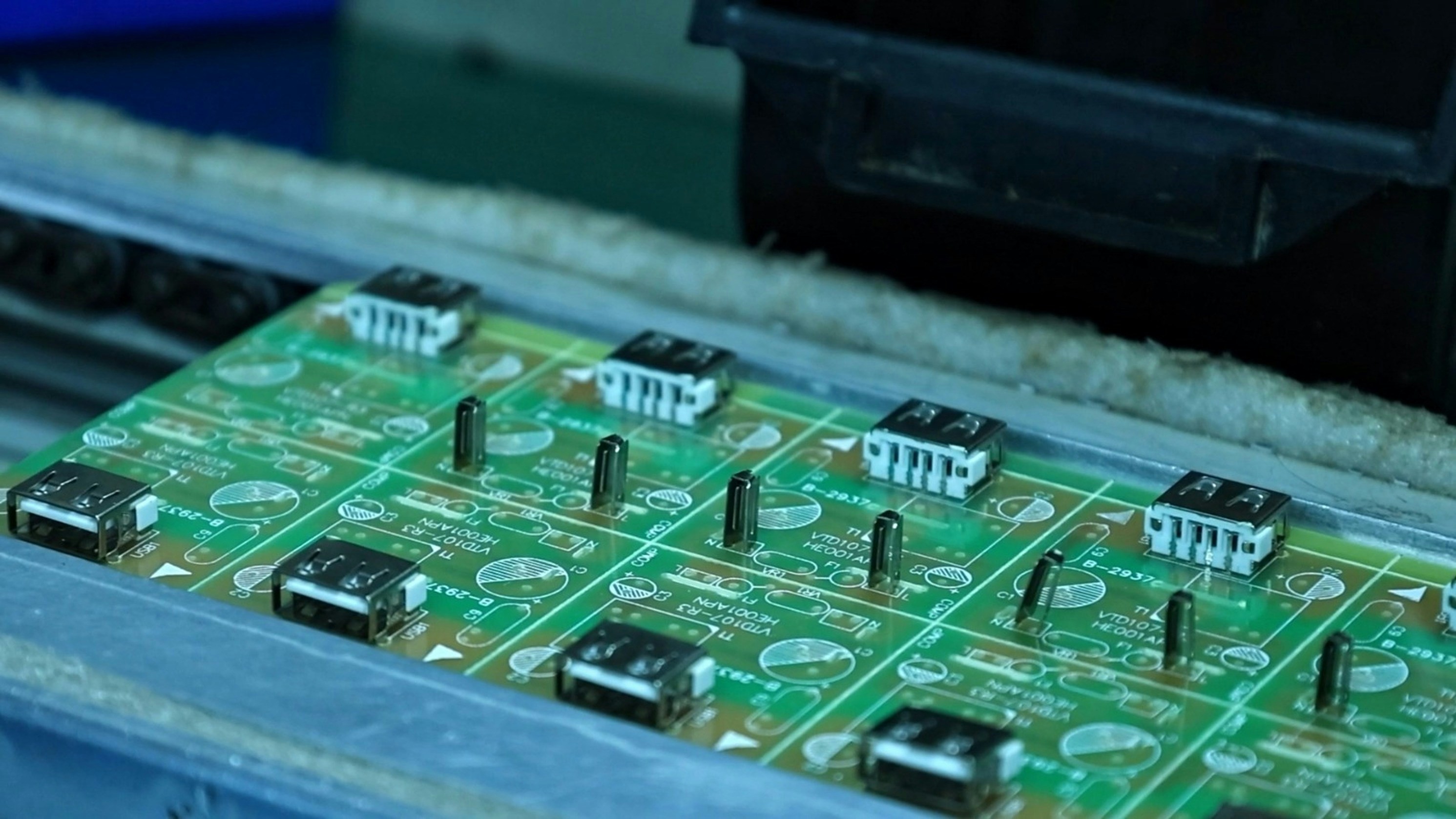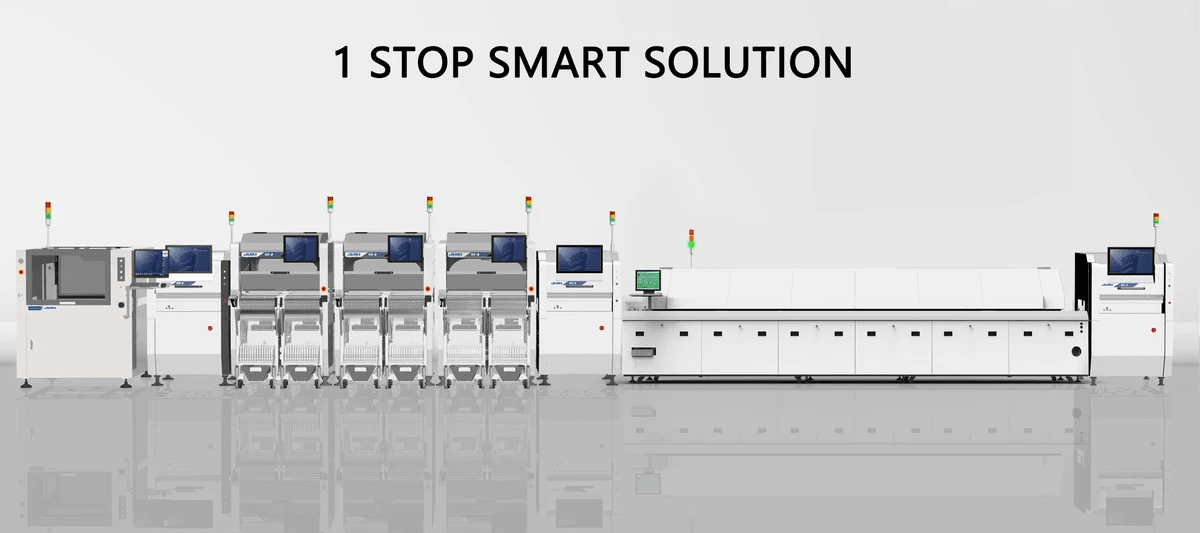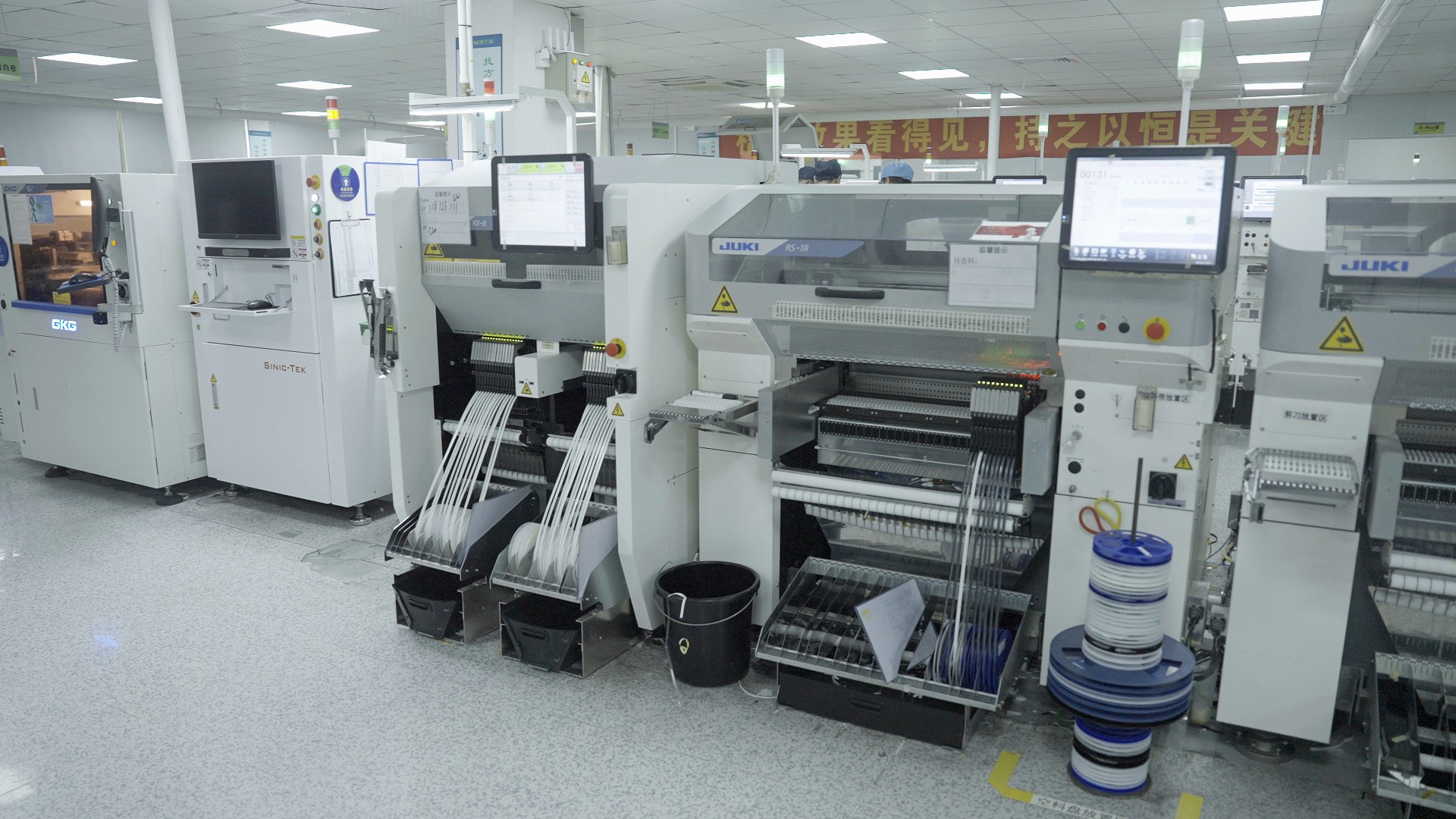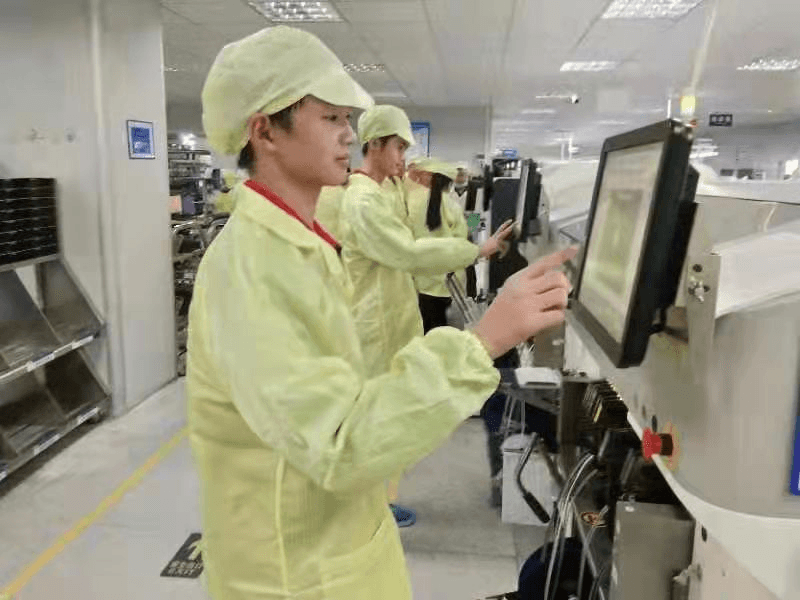Introduction
The landscape of electronics manufacturing has undergone a remarkable transformation, with the rise of PCB manufacturing machines playing a pivotal role in this evolution. These machines have revolutionized the way circuit card assembly is conducted, enhancing efficiency and precision in the production process. As industries continue to embrace automation, understanding the intricacies of PCB fabrication and assembly becomes essential for staying competitive.
The Rise of PCB Manufacturing Machines
In recent years, there has been an unprecedented surge in demand for high-quality printed circuit boards (PCBs), prompting manufacturers to invest heavily in advanced machinery. The advent of sophisticated PCB manufacturing and assembly equipment has allowed companies to streamline their operations while maintaining superior quality standards. This shift not only meets the growing market needs but also sets the stage for innovation within the realm of electronics.
Understanding Circuit Board Assembly Machines
At the heart of modern electronics production lies the circuit board assembly machine, which plays a crucial role in assembling various components onto a PCB assembly board efficiently. These machines are designed to automate complex processes that were once labor-intensive, thereby reducing human error and increasing throughput. By grasping how these machines operate and their significance within PCB manufacturing assembly, businesses can better leverage technology to enhance their production capabilities.
The Role of Technology in PCBA
Technology is at the forefront of advancements in PCB fabrication and assembly, driving improvements that impact everything from design to final inspection. Innovations such as automated optical inspection systems and advanced soldering techniques ensure that each circuit card assembly meets rigorous quality standards before reaching consumers. As technology continues to evolve, its integration into PCBA processes will undoubtedly shape the future landscape of electronics manufacturing.
Overview of PCB Manufacturing Machines

In the fast-paced world of electronics, PCB manufacturing machines play a pivotal role in creating reliable and efficient circuit board assembly processes. These machines are crucial for transforming raw materials into fully functional circuit card assemblies that power everything from smartphones to industrial equipment. Understanding the types of machines available, their key features, and the importance of efficiency can significantly impact your PCB fabrication and assembly operations.
Types of Machines Used
PCB manufacturing encompasses a variety of specialized machines designed for different stages of production. Some common types include pick-and-place machines, soldering equipment, and inspection systems. Each type has its unique function; for instance, a circuit board assembly machine is essential for placing components accurately on the PCB assembly board, while soldering machines ensure strong electrical connections are made.
Moreover, there are also automated optical inspection (AOI) systems that verify the quality of circuit card assemblies before they leave the production line. This diverse array ensures that every aspect of PCB manufacturing and assembly is covered, leading to higher reliability in final products. Choosing the right mix of these machines can streamline your manufacturing process and improve overall output quality.
Key Features to Consider
When selecting PCB manufacturing and assembly machinery, several features should be top-of-mind to maximize productivity and quality. First, look for precision capabilities; a high-accuracy circuit board assembly machine can make all the difference in ensuring components fit perfectly on the PCB fabrication and assembly line. Additionally, consider speed—machines that offer quick setup times and rapid processing will enhance your overall efficiency.
Another critical feature is programmability; modern equipment often comes with advanced software that allows for easy updates as designs change or new components are introduced into your product lineup. Lastly, durability cannot be overlooked; investing in robust machinery means fewer breakdowns and maintenance issues over time—key factors in maintaining an efficient pcb fab and assembly operation.
Importance of Efficiency
Efficiency is not just a buzzword; it’s a fundamental principle driving successful PCB manufacturing processes today. With increasing demands for faster turnaround times without compromising quality, manufacturers must prioritize optimizing their workflows through effective use of technology like automated circuit card assembly systems. Efficient operations lead to reduced costs per unit while maximizing output—a win-win scenario!
Moreover, embracing efficiency means being able to respond swiftly to market changes or customer demands without sacrificing reliability in your pcb manufacturing assembly practices. As competition heats up in this industry segment, staying ahead by investing in cutting-edge machinery becomes crucial for long-term success. Ultimately, focusing on efficiency not only boosts productivity but also enhances customer satisfaction through timely delivery of high-quality products.
Circuit Board Assembly Machine Insights

Circuit board assembly machines are the backbone of modern electronic manufacturing, transforming raw materials into functional circuit card assemblies with remarkable precision and speed. These machines integrate various technologies to automate the process of placing components onto a PCB assembly board, ensuring that each product meets stringent quality standards. Understanding how these machines work can provide valuable insights into optimizing PCB manufacturing and assembly processes.
How Circuit Board Assembly Machines Work
At their core, circuit board assembly machines utilize a combination of pick-and-place technology and soldering techniques to assemble electronic components onto a PCB fabrication and assembly platform. The process typically begins with the machine loading the unpopulated PCB into its work area, where it uses advanced vision systems to identify component placement accurately. Once positioned, components are attached using solder paste or adhesive before undergoing reflow or wave soldering, completing the circuit card assembly.
This automation not only speeds up production but also enhances accuracy, reducing human error significantly in PCB manufacturing and assembly processes. The integration of software for programming and monitoring allows manufacturers to optimize workflows in real time, ensuring that every step from loading to inspection is efficient and reliable. Consequently, circuit board assembly machines play a crucial role in delivering high-quality products within tight deadlines.
Leading Brands in the Market
Several brands dominate the landscape of circuit board assembly machinery, each offering unique features tailored for specific manufacturing needs. Companies like Juki, Yamaha Motor Co., and ASM Pacific Technology are renowned for their cutting-edge technology and reliability in producing high-speed automated solutions for PCB fab and assembly operations. Their machines often come equipped with advanced features such as multi-functionality, scalability options, and robust software support designed to streamline the entire PCB manufacturing process.
Another noteworthy player is Panasonic's NPM series which emphasizes flexibility in handling varied component types while maintaining exceptional placement accuracy—essential for modern electronics that require diverse circuitry on a single PCB assembly board. Additionally, companies like Mydata (now Mycronic) have made significant strides in smart factory solutions by incorporating Industry 4.0 principles into their equipment design; this allows manufacturers to achieve unprecedented levels of efficiency during production runs.
Benefits of Automated Assembly
The transition towards automated assembly through circuit board assembly machines has revolutionized how PCBs are manufactured today. One major benefit is increased productivity; these machines can run continuously with minimal downtime compared to manual labor-intensive methods often used in traditional setups for pcb fabrication and assembly tasks. This means quicker turnaround times from prototype development through mass production—a critical advantage when responding to market demands swiftly.
Moreover, automated systems enhance product consistency by minimizing variations that can occur due to human factors during manual handling—a common issue faced in conventional pcb manufacturing assemblies. With precise control over parameters such as temperature during soldering or placement force on components, manufacturers can ensure higher quality outcomes while reducing waste associated with errors or rework processes commonly seen during manual operations.
Lastly, investing in automated solutions translates into long-term cost savings despite initial capital expenditures; improved efficiency leads directly to lower operational costs over time as well as enhanced capacity without needing proportional increases in workforce size—a win-win scenario for businesses looking to thrive amid growing competition within the electronics industry.
SMT Equipment Essentials

In the world of PCB manufacturing and assembly, Surface Mount Technology (SMT) has revolutionized how circuit card assembly is conducted. SMT allows for the placement of components directly onto the surface of a printed circuit board (PCB), which streamlines the assembly process and enhances efficiency. Understanding SMT equipment is essential for anyone involved in PCB fabrication and assembly, as it plays a pivotal role in modern electronics production.
What is Surface Mount Technology?
Surface Mount Technology (SMT) refers to a method where electronic components are mounted directly onto the surface of a PCB rather than being inserted into holes as in traditional through-hole technology. This technique enables higher component density and reduces the overall size of circuit board assemblies, which is crucial for compact electronic devices. As a result, SMT has become the standard for modern PCB manufacturing and assembly due to its efficiency and effectiveness.
Popular SMT Machines
There are several popular machines that dominate the SMT landscape, each designed to cater to different aspects of circuit board assembly machine needs. Among them are pick-and-place machines, which automate the placement of components on PCBs with remarkable speed and precision; reflow ovens, which solder these components onto the board; and stencil printers that apply solder paste before component placement. Investing in reliable SMT equipment can significantly enhance your PCB fab and assembly processes by increasing throughput while maintaining high-quality standards.
Choosing the Right SMT Equipment
Selecting appropriate SMT equipment requires careful consideration of various factors such as production volume, component types, and budget constraints. It's essential to assess your specific needs when it comes to circuit card assembly capabilities—whether you're focusing on high-mix low-volume production or mass production runs will influence your choice significantly. Additionally, compatibility with existing systems should not be overlooked; ensuring seamless integration into your current PCB manufacturing assembly line can save time and reduce costs.
The Importance of Quality Control
When it comes to PCB manufacturing and assembly, quality control is not just a checkbox; it's the backbone of the entire process. A well-executed quality control strategy ensures that each circuit card assembly meets the stringent standards required for functionality and reliability. This becomes especially crucial in industries where even minor defects can lead to significant failures or safety hazards.
Inspection Techniques for PCBA
Inspection techniques for PCB assembly board processes are varied and essential in maintaining high-quality standards. From automated optical inspection (AOI) to X-ray inspection, these methods help identify defects that could compromise the integrity of circuit board assembly machines. By employing a combination of these techniques, manufacturers can ensure that their PCB fabrication and assembly processes yield products that meet or exceed industry standards.
In addition to automated inspections, manual inspections play a vital role in the quality assurance process. Skilled technicians visually inspect components and solder joints, ensuring that every aspect of the circuit card assembly is up to par. This multifaceted approach helps catch issues early on, reducing rework costs and improving overall efficiency in PCB manufacturing and assembly.
Role of Visual Inspection Systems
Visual inspection systems are integral to modern PCB manufacturing assemblies, providing critical oversight at various stages of production. These systems utilize advanced imaging technology to detect anomalies in real-time as products move through the production line. By integrating visual inspection systems into their workflow, companies can significantly enhance their ability to maintain high-quality standards across all PCB fab and assembly operations.
The role of these systems extends beyond mere detection; they also facilitate data collection for continuous improvement initiatives within PCB fabrication and assembly processes. By analyzing trends from visual inspections, manufacturers can identify recurring issues and implement corrective actions proactively. This not only boosts product reliability but also fosters a culture of quality throughout the organization.
Ensuring Reliability in PCB Manufacturing
Ensuring reliability in PCB manufacturing requires a comprehensive approach that encompasses every aspect from design to final inspection. Implementing rigorous testing protocols during each phase helps guarantee that every circuit board assembly machine produces dependable products capable of withstanding real-world conditions. Reliability isn’t just about meeting specifications; it’s about building trust with customers who depend on your products for their own applications.
Moreover, ongoing training programs for staff involved in both production and quality control are essential for maintaining high standards over time. As technology evolves, so too must the skills required to effectively manage new equipment used in PCB manufacturing assemblies—ensuring everyone is on the same page enhances overall efficiency as well as product quality. Ultimately, investing time and resources into ensuring reliability pays dividends through reduced returns and increased customer satisfaction.
Contract Manufacturing Services

In the fast-paced world of electronics, outsourcing PCB manufacturing and assembly has become a strategic move for many businesses. Partnering with specialized contract manufacturers allows companies to focus on their core competencies while leveraging the expertise and advanced technology of these service providers. This arrangement not only enhances efficiency but also reduces overhead costs associated with in-house production.
Advantages of Outsourcing PCBA
Outsourcing circuit card assembly provides several advantages that can significantly impact a company’s bottom line. First, it allows for access to cutting-edge circuit board assembly machines that might be too costly to acquire and maintain in-house. Additionally, contract manufacturers often have established processes for PCB fabrication and assembly, ensuring high-quality results without the hassle of training staff or investing in new equipment.
Another key benefit is flexibility; businesses can scale their production up or down based on market demand without incurring the fixed costs associated with maintaining a full manufacturing facility. Moreover, partnering with experienced PCB manufacturing assembly services often leads to faster turnaround times due to streamlined operations and optimized workflows. Ultimately, outsourcing can provide a competitive edge by allowing companies to innovate and adapt more rapidly in an ever-evolving market.
Bensun Technology's Offerings
Bensun Technology stands out as a leading player in the realm of PCB fabrication and assembly services, offering comprehensive solutions tailored to meet diverse customer needs. With state-of-the-art circuit board assembly machines at their disposal, they ensure precision and quality throughout the entire process—from design through production to final inspection. Their commitment to utilizing advanced technology means clients benefit from enhanced reliability and performance in every PCB assembly board delivered.
Moreover, Bensun Technology specializes in quick-turn prototypes as well as large-scale production runs, making them an ideal partner for businesses at any stage of development. Their extensive experience across various industries enables them to provide customized solutions that align perfectly with specific project requirements while maintaining competitive pricing structures. This adaptability makes Bensun a go-to choice for companies looking for efficient PCB manufacturing and assembly services.
How to Choose a Contract Manufacturer
Selecting the right contract manufacturer for your PCB fab and assembly needs requires careful consideration of several factors. Start by assessing their experience in handling projects similar to yours; this will give you insight into their capabilities regarding both complex designs and volume requirements. Additionally, it’s essential to evaluate their quality control processes—look for certifications such as ISO 9001 that indicate adherence to industry standards.
Another critical aspect is communication; choose a manufacturer who is responsive and transparent about timelines, costs, and potential challenges during production runs. Lastly, consider visiting their facility if possible; seeing firsthand how they operate can provide peace of mind regarding your investment in outsourced PCB manufacturing assembly services. By keeping these points in mind, you’ll be better equipped to make an informed decision that aligns with your business goals.
Conclusion

The landscape of PCB manufacturing is evolving at a rapid pace, driven by advancements in technology and the increasing demand for high-quality electronic devices. As we look to the future, innovations such as AI-driven automation and improved materials will redefine circuit board assembly processes, making them faster and more efficient. Staying ahead of these trends will be crucial for companies involved in PCB fabrication and assembly.
Future Trends in PCB Manufacturing
One of the most exciting future trends in PCB manufacturing is the integration of smart technologies into circuit board assembly machines. These machines will not only enhance precision but also provide real-time data analytics to optimize production processes. Additionally, sustainable practices are gaining traction, with eco-friendly materials becoming essential in PCB manufacturing and assembly.
Another trend is miniaturization, where the demand for smaller yet more powerful circuit card assemblies continues to grow. This push for compact designs drives innovation in PCB fab and assembly techniques, enabling manufacturers to create intricate layouts without compromising performance. As technology advances, we can expect even greater efficiency from tools like automated pick-and-place machines that streamline the entire assembly process.
Finally, collaboration between manufacturers and designers is set to improve product development timelines significantly. By leveraging feedback loops during the manufacturing phase, companies can refine their designs earlier on—leading to better quality control and reduced costs in PCB manufacturing assembly.
Maximizing Efficiency with Modern Machines
To maximize efficiency in circuit board assembly, investing in cutting-edge machinery is non-negotiable. Modern circuit board assembly machines equipped with advanced robotics can dramatically reduce cycle times while maintaining high accuracy levels—an essential factor when producing complex PCBs at scale. Furthermore, integrating software solutions that monitor machine performance helps identify bottlenecks before they become significant issues.
Another key aspect of maximizing efficiency involves training personnel effectively on these modern systems. Knowledgeable operators who understand how to leverage new technologies will ensure that every feature of a machine is utilized optimally—resulting in smoother operations during PCB fabrication and assembly processes. The synergy between skilled workers and advanced machinery creates a dynamic environment conducive to innovation.
Lastly, adopting lean manufacturing principles can further enhance productivity across all stages of PCB manufacturing and assembly. By minimizing waste through continuous improvement efforts—such as optimizing layouts or reducing setup times—companies can achieve higher throughput while delivering quality products consistently.
The Value of Quality in Circuit Board Assembly
Quality assurance remains paramount in circuit board assembly; it’s what sets successful manufacturers apart from their competitors. Implementing rigorous inspection techniques throughout the production process ensures that every component meets industry standards before it reaches consumers’ hands—a critical step for reliability in PCB fabrication and assembly projects alike.
Visual inspection systems play an integral role here by providing real-time feedback on product quality during various stages of production; this allows teams to address any potential issues immediately rather than waiting until final inspections occur post-assembly—a costly mistake! Investing time into developing robust quality control protocols ultimately leads not only to superior products but also enhances brand reputation over time within this competitive market space.
In conclusion, while embracing modern technologies like automated circuit board assembly machines may seem daunting initially; it’s vital for staying relevant amid evolving consumer demands within electronics sectors worldwide today! Balancing efficiency with uncompromising quality standards ensures that businesses thrive now—and well into an increasingly tech-savvy future!
